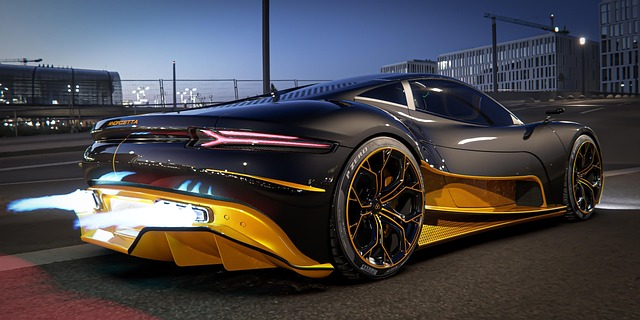Choosing between an electric mountain bike (eMTB), road/hybrid e-bike, or low maintenance electric car (e-car) depends on your needs. For off-road adventures, opt for an eMTB with robust frames and powerful motors. Electric road bikes excel on paved surfaces. E-cars offer longer ranges and advanced safety features for urban commuting. Key components include frame material, motor/battery power, tire type, and suspension systems tailored to terrain. Battery life, charging options, comfort, ergonomics, and tech features also matter. Prioritize safety features and understand local regulations for a satisfying e-bike experience.
“Looking to purchase an e-bike but unsure where to start? Our comprehensive guide is your ultimate companion in navigating the world of electric bikes. From understanding various types tailored for different purposes, to decoding essential specifications and ensuring optimal comfort and safety—we’ve got you covered. Discover key components, battery life insights, and important regulations. Make informed decisions when choosing your ideal select electric vehicle.”
- Understanding E-Bike Types and Their Purposes
- Key Components to Consider When Buying an E-Bike
- Range, Speed, and Power: Deciphering Specs
- Battery Life and Charging: What You Need to Know
- Comfort and Ergonomics for Optimal Riding Experience
- Safety Features and Regulations for Electric Bikes
Understanding E-Bike Types and Their Purposes

E-bikes come in various types, each designed for specific purposes and terrain. When considering an e-bike purchase, understanding these classifications is key to making an informed decision. The two main categories are electric mountain bikes (eMTB) and electric road/hybrid bikes. eMTBs are built for off-road adventures and rugged trails, featuring robust frames, powerful motors, and specialized suspension systems. They offer a smooth ride and exceptional control on challenging terrain. On the other hand, electric road bikes are optimized for speed and efficiency on paved surfaces. These bikes have lightweight frames, sleek designs, and fine-tuned motors tailored for urban commuting or racing.
Beyond these, low maintenance electric cars (or e-cars) are worth considering if you seek a more traditional vehicle experience with environmental benefits. They offer longer ranges and can navigate both city streets and highways comfortably. Some models even incorporate advanced driver assistance systems (ADAS), enhancing safety features found in modern vehicles, such as electric school bus programs, which prioritize student transportation.
Key Components to Consider When Buying an E-Bike

When shopping for an e-bike, several key components should be at the forefront of your considerations. Firstly, selecting the right frame material is essential; aluminium frames offer a balance between affordability and durability, while carbon fibre excels in weight reduction but comes at a higher price point. Ensure the frame size aligns with your height for optimal comfort and control.
Another critical aspect is the motor and battery system. Look for motors that deliver sufficient torque for your intended use—from gentle assistance for leisure rides to powerful boosts for hilly terrains. Battery range should match your daily commute needs, with many modern e-bikes offering 40-80 kilometres on a single charge. Additionally, consider tire type and suspension systems tailored to your riding environment, whether it’s smooth city streets or rugged off-road trails. For families seeking affordable electric SUVs, look for models featuring sturdy frames, reliable motors, and versatile tire options designed for all-season performance. Remember, the best electric vehicles for winter driving should have efficient heating systems and robust batteries to withstand cold climates. Similarly, if you’re in search of a best long range electric car, prioritize powerful motors and high-capacity batteries that can navigate longer distances without frequent recharging.
Range, Speed, and Power: Deciphering Specs

When considering an e-bike purchase, understanding key specifications such as range, speed, and power is essential. Range, measured in kilometers or miles per charge, determines how far you can travel before needing to recharge. Look for models that offer a suitable range based on your intended use – whether daily commuting, recreational riding, or longer treks.
Speed and power, expressed in watts (W) or kilowatts (kW), influence the bike’s performance. Higher numbers translate to faster acceleration and higher top speeds. Consider your terrain and riding style: if you plan to tackle varied landscapes, opt for a robust e-bike with powerful motors. For smoother, urban commutes, a more moderate power setting may suffice. Always consider the combined impact of range, speed, and power on your overall experience when selecting electric vehicles from the vast market available today, especially when following an EV buying guide for beginners.
Battery Life and Charging: What You Need to Know

When considering an e-bike, battery life and charging are key factors to evaluate. The range offered by a single charge varies widely depending on the model and the type of terrain you plan to navigate. Many modern e-bikes boast impressive ranges between 25 to 80 miles (40 to 130 kilometers) on a single charge, making them suitable for both urban commutes and longer excursions.
Understanding charging options is equally important. Most e-bikes utilize standard household outlets for recharging, while some top-rated electric bikes under $30,000 offer faster charging capabilities, typically through dedicated charging stations. Low maintenance electric cars are becoming increasingly popular, with many models featuring swap-out batteries that can be quickly replaced, simplifying the process. Green energy logistics and shipping options are also worth considering, as they contribute to a more sustainable overall experience, aligning with the growing demand for eco-friendly transportation solutions.
Comfort and Ergonomics for Optimal Riding Experience

When shopping for an e-bike, comfort and ergonomics should be a top priority to ensure an optimal riding experience. The right fit and ease of use are key factors in determining how enjoyable your journeys will be. Look for bikes with adjustable seats and handlebars that cater to riders of different heights and body types. A comfortable saddle and grip positions that align with your natural hand and arm movements can make even the longest commutes feel effortless.
Consider the latest EV models with advanced tech, such as smart connectivity and regenerative braking systems, which not only enhance performance but also contribute to a smoother ride. Zero-emission delivery vehicles and top-rated electric trucks for work are also becoming increasingly popular, offering eco-friendly options for both personal use and professional applications. By prioritizing comfort and selecting the right electric vehicles, you’ll be able to enjoy your rides without feeling exhausted or experiencing discomfort.
Safety Features and Regulations for Electric Bikes

When considering an e-bike purchase, it’s crucial to prioritize safety features and understand local regulations. Many modern electric bicycles come equipped with advanced safety systems, such as disc brakes, LED lighting, and automatic lights that activate in low-light conditions. These features enhance visibility and control, making rides safer, especially during winter driving when conditions can be more challenging.
In many regions, e-bikes fall under specific regulations for vehicle registration, licensing, and helmet use, similar to traditional motorcycles or scooters. Understanding these laws is essential for legal riding and could involve selecting a model that complies with local standards. The EV buying guide for beginners often includes safety as a top consideration, promoting the adoption of zero-emission transportation choices while ensuring riders’ well-being.
When considering an e-bike purchase, it’s essential to weigh key factors like e-bike types, component quality, performance specifications, battery life, comfort, and safety features. Understanding these aspects empowers you to make an informed decision, ensuring you select the perfect electric vehicle for your needs and enjoy a smooth, efficient riding experience. Remember, navigating through the various options available can be daunting, but with this guide as your companion, you’ll be well-equipped to choose the ideal e-bike that suits your lifestyle.
